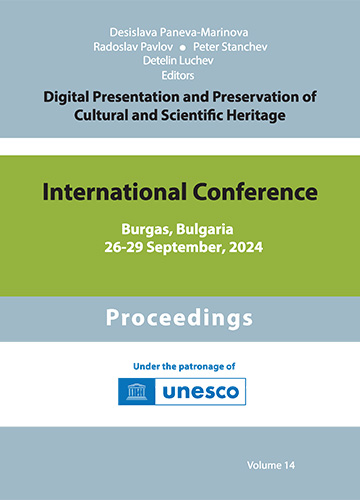Delivering Personalized Content to Open-air Museum Visitors Using Geofencing
DOI:
https://doi.org/10.55630/dipp.2022.12.11Keywords:
Open-air Museum, Geofencing, Users segmentation, Distributed services, Push notificationAbstract
This paper presents the architecture and implementation of a service that delivers personalized content to open-air museum visitors. The service uses push notifications to deliver this content. Notifications can be delivered to all visitors or personalized - to a group of visitors or to a specific visitor. The service segments museum visitors according to their location and their profile, which is built dynamically over time. For the geospatial segmentation of visitors, geofencing is used - each visitor is assigned to a segment that corresponds to a specific geographic area - part of an open space or exhibit. The service allows localization of visitors by their GPS coordinates or by estimating their distance from Bluetooth Low Energy (BLE) beacons. The geofences are described as a polygons or circles. Geospatial segmentation is implemented using a NoSQL database MongoDB, which has built-in capabilities for working with geospatial queries. Depending on the profile, each visitor falls into one or several segments: professional researcher, non-professional researcher, inspiration seeker, casual visitor, and visitors with disabilities. For each visitor, personalized content is delivered, depending on the segments to which the visitor is assigned. The necessary experiments have been conducted and analyzed to prove the applicability of the service for real-time delivery of personalized content.References
Antoniou, A. K.-T. (2016). Capturing the visitor profile for a personalized mobile museum experience: An indirect approach. 24th ACM Conference on User Modeling, Adaptation and Personalisation. , pp. 1-10. Halifax, Canada: ACM.
ElDamshiry, K. K. (2022). Open Air Natural History Museums Transformation: From static to interactive. Advance Engineering Science , 991-1004.
Fan, Y. L. (2022). Impact of generativity on museum visitors' engagement, experience, and psychological well-being. Tourism Management Perspectives , 1-14.
Gonçalves, H. C.–P.–B.–S.–B. (2021). Spatial Data Handling in NoSQL Databases: A User-centric View. Proceedings XXII GEOINFO , (pp. 167-178).
Lourve. (2022). The Louvre App . Retrieved June 1, 2022, from The Louvre museum: https://www.louvre.fr/en/new-app
OneSignal. (2022). OneSignal - Customer Messaging Delivered . Retrieved June 1, 2022, from https://onesignal.com/
PlotProjects. (2022). The best geofencing software plugin for mobile apps . Retrieved June 1, 2022, from https://www.plotprojects.com/
Sepe, F. M. (2022). Making Smarter Museums Through New Technologies. In Handbook of Research on Museum Management in the Digital Era (pp. 1-24). IGI Global.
Shoji, Y. A. (2021). Location-based Reminder for Memorizing What Visitors Learn at a Museum. BIRDS+ WEPIR@ CHIIR , (pp. 79-87).
Slobodova, L. R.–P.–K.–M. (2022). Open-air Museums–the Future of the Presentation of Spiritual and Architectural Heritage. Muzeologia , 5-18.
Vassilakis, C. P. (2017). exhiSTORY: Smart exhibits that tell their own stories. Future Generation Computer Systems , 542-556.




